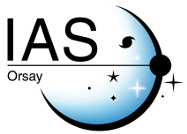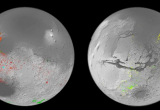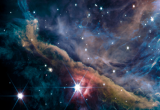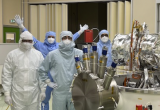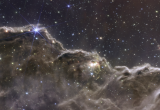Using the orbital imaging spectroscopy instruments OMEGA (Mars Express) and CRISM (MRO), the Solar System team has released the first global and high resolution map of hydrated minerals on Mars. These minerals hold the distinction of having been formed through interaction between the ancient Martian crust and liquid water, while many of them still contain some amount of water trapped within their structure. Such hydrated minerals are excellent tracers of past water-bearing environments and are a primary target of exobiology missions to Mars.
You are here
An international research team has just revealed the first images of the Orion Nebula, the richest and closest star nursery in the Solar System, captured by the James Webb Space Telescope. They once again demonstrate the exceptional performance of this instrument.
The most detailed and complete images ever taken of a Photo-Dissociation Region (PDR) in the closest site of massive star formation, the Orion Molecular Cloud, have been obtained with the Keck telescope and portends what JWST should soon accomplish. These observations are critical for understanding the interaction of young massive stars with the gas and dust cloud in which they are born and where Sun-like stars form.
The PLATO project has reached a new decisive stage in the development of the calibration structure for the cameras intended for flight at IAS. The first EM (Engineering Model) camera to be calibrated by the three Test Houses of the PLATO consortium has just arrived at the IAS. This measurement campaign will allow the three production sites to be validated with the same functional camera, which is a prerequisite for being authorised to host all the flight cameras.
The first data were presented on Tuesday 12 July. They confirm the exceptional performance of the JWST and its four scientific instruments (NIRSPec, NIRISS, NIRCam, MIRI), in particular the angular resolution and sensitivity which are often better than predicted.
